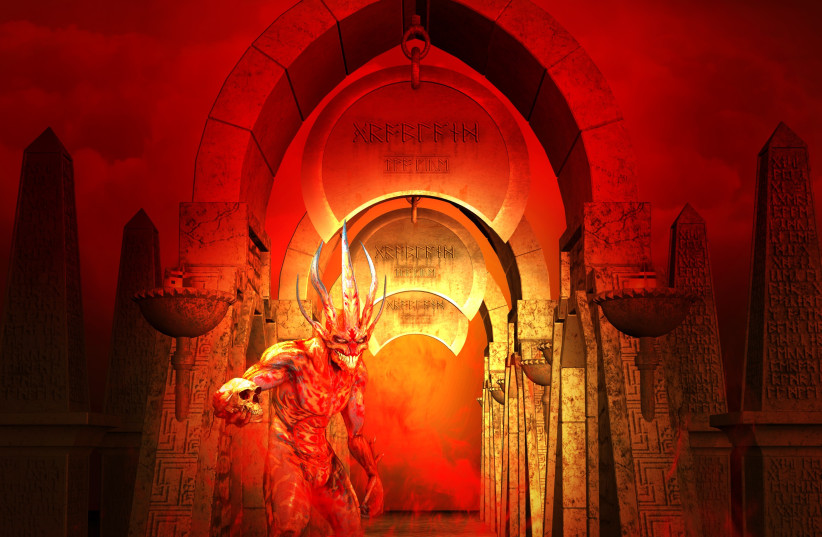In They Flew, Carlos Eire, a professor of history at Yale University and author, among other books, of A Very Brief History of Eternity, and Waiting for Snow in Havana, challenges assumptions by providing an informative, engaging, and extraordinarily provocative account of “impossible events” that, along with the evil deeds of witches and the devil, were considered real by very many Christians.
Eire sets the context by describing attitudes toward miracles, levitation, and bilocation in ancient Greece, Islam, Jewish folklore, rabbinical literature, and the Old Testament. He demonstrates that by the 4th century, belief in the divine (and demonic) origin of these phenomena was well established among Christians. This binary tradition was passed on throughout the Middle Ages, early modernity and, to some extent, down to the present.
The history of levitation and fears of demonic influence
In the 16th and 17th centuries, thousands of Europeans testified that they had seen holy men and women fly, levitate, and appear in two places at the same time.
After watching Joseph of Cupertino levitate above his head, Pope Urban VIII vowed to describe this miracle if he lived long enough to participate in the canonization of “the Flying Friar.”
Sister Maria de Agreda convinced many of her contemporaries (including judges of the Spanish Inquisition) that she had crossed the Atlantic – into what is now Texas and New Mexico – more than 500 times to evangelize Jumano natives; and that God and the Virgin Mary had given her privileged information for her one million-word narrative on Mary’s life and the doctrine of the Immaculate Conception.

Emphasizing that – apart from the events they describe – eyewitness testimonies are not only facts but social facts (i.e., habits of acting, thinking, and feeling that play a significant role in determining what is possible or impossible), Eire challenges those who assume that the ascent from medieval to modern, and from primitive credulity and superstition to empirical science, enlightenment, and reason “is one neat upward line on a graph with no downward dips, or just a few, at most.” And he insists that we understand the past through the ways in which “reality” has been constructed, contested, and revised.
They Flew brings new meaning to the phrase “The devil is in the details.” Sixteenth-century German religious reformer Martin Luther declared that devils follow him into bed, “grab my head and plague me there, and when that proves useless, I show them my ass, for that’s where they belong.” Satan’s miracles, claimed John Calvin, are “deceitful tricks… to mislead the simple-minded and untutored.”
Eire points out that Reformation Protestants, uneasy about mixing Heaven and Earth, the sacred and the mundane, maintained that once the gospel had been preached everywhere, God had decided that miracles were no longer necessary to spread its truth. Nonetheless, Catholics and Protestants “were closer to each other than it might seem” because Protestants believed the devil could perform “impossible” feats that might easily be mistaken for miracles wrought by the Almighty.
And so, albeit for different reasons, these two competing branches of Western Christianity intensely scrutinized levitation and bilocation to determine “whether they were divine or demonic in origin.” Catholics assiduously investigated frauds to contrast them with genuine examples of the supernatural acts of individuals they subsequently canonized.
For centuries, the author emphasizes, empirical science and religion interacted rather than contradicted one another. Fascinated with theology, alchemy, and prophecy, Isaac Newton wrote 1.3 million words on biblical topics. Robert Boyle maintained that some phenomena are “above nature,” and “some truths are not explicable by the powers of matter and motion.”
He has also identified reports of levitation and bilocation – supernatural and demonic – in the 20th and 21st centuries. A frequent flyer, credited with intercepting Allied bombers in mid-air to prevent them from destroying the town of San Giovanni Rotondo during World War II, Italian Capuchin friar, priest, stigmatist, and mystic Padre Pio of Pietrelcina was canonized by Pope John Paul II in 2002.
While claims of demonic levitations and exorcisms continue to surface in this century, but because they reflect a worldview derived from ancient and medieval times, Eire writes, “phenomena deemed impossible in the 21st century remain a risky liminal field of study,” generating “cognitive and epistemic dissonance.”
That said, he is intrigued, and perhaps even persuaded, by a “post-secular” perspective that seeks to replace the principal assumptions of the Scientific Revolution and the Enlightenment with a conviction that faith and reason, the natural and the supernatural “are not at all incompatible.”
He alludes to an even more radical “social science of the activities of the invisible... a suspension of disbelief that neither affirms nor judges” but is open to the possibility that “the worlds of spirit are undoubtedly even richer and more surprising than we think or could imagine.”
Eire begins his book by contemplating the removal of the question mark from the sentence “They flew?” He concludes by daring himself to replace it with an exclamation point.
Glenn Altschuler is the Thomas and Dorothy Litwin Emeritus Professor of American Studies at Cornell University.
- THEY FLEW: A HISTORY OF THE IMPOSSIBLE
- By Carlos Eire
- Yale University Press
- 492 pages; $35
